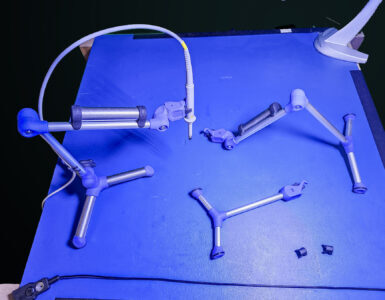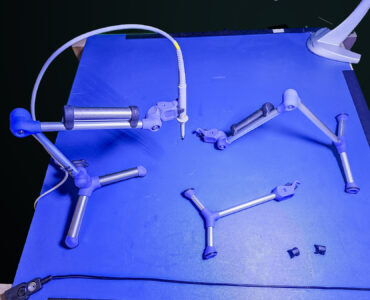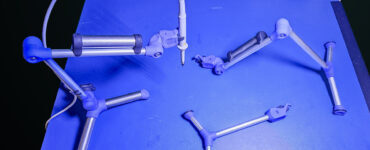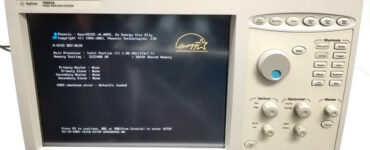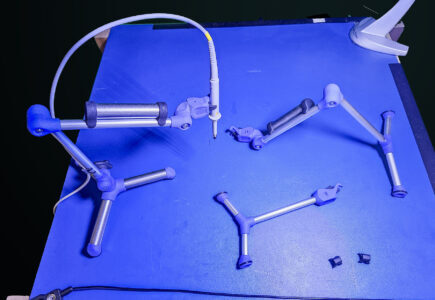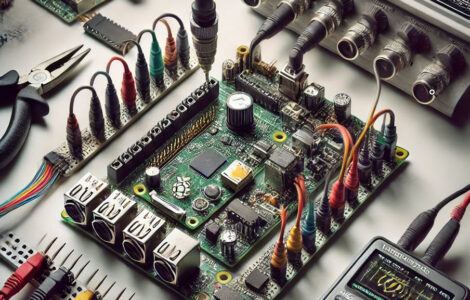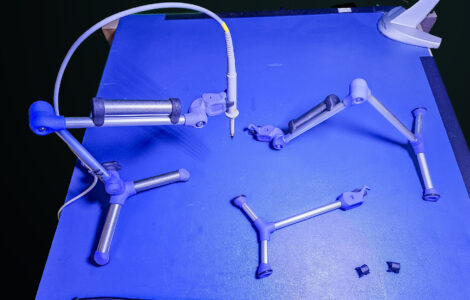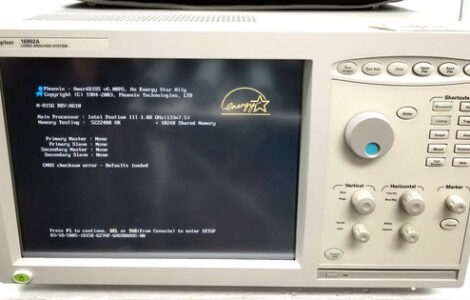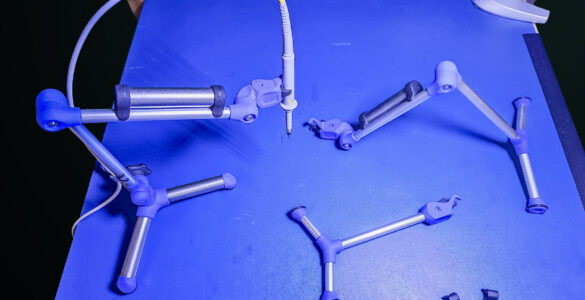Disclaimer: While I purchased these myself at full price, Gisler did pay for shipping. This is my own opinion. If you’ve ever tried to hold multiple scope probes steady during debugging, you know how frustrating...
Layout 1
Validating my dataflyer BUSS PAL replacement GAL
As some of you that have been following my reverse engineering efforts over the last few years, one of the tasks I took on was reverse engineering the BUSS PAL TIBPAL16L8-25 present in on the Expansion Systems Dataflyer...
Amiga QB Extract recently updated
There was a HDD backup utility for the Commodore Amiga called Quarterback, part of a suite of tools called Quarterback Tools. This utility allowed you to backup existing files on your HDD, compress and/or encrypt them...
Layout 2
Building a replacement Amiga 500 power supply
Intro If you’re into retro computing, you probably know the Commodore Amiga 500—a beloved classic with surprisingly capable hardware for its time. But like many vintage systems, the original power supply is often...
Validating my dataflyer BUSS PAL replacement GAL
As some of you that have been following my reverse engineering efforts over the last few years, one of the tasks I took on was reverse engineering the BUSS PAL TIBPAL16L8-25 present in on the Expansion Systems Dataflyer...
Amiga QB Extract recently updated
There was a HDD backup utility for the Commodore Amiga called Quarterback, part of a suite of tools called Quarterback Tools. This utility allowed you to backup existing files on your HDD, compress and/or encrypt them...
Layout 3
Building a replacement Amiga 500 power supply
Intro If you’re into retro computing, you probably know the Commodore Amiga 500—a beloved classic with surprisingly capable hardware for its time. But like many vintage systems, the original power supply is often...
Recapping a Samsung 204B monitor
In September 2006, I bought a Samsung 204B SyncMaster monitor for $320 plus tax. It was a 4:3 monitor, ideal for specific tasks like my Logic Analyzer Cart. In July 2024, the monitor stopped working and wouldn’t power...
Couple hi-res images of 16902A mainboard
I just recently added another HP/Agilent logic analyzer to my collection. This time it is the 16902A. I needed to remove the CPU tray to replace the IDE HDD with a SATA SSD. As a result, I figured I’d take couple...
Layout 4
Validating my dataflyer BUSS PAL replacement GAL
As some of you that have been following my reverse engineering efforts over the last few years, one of the tasks I took on was reverse engineering the BUSS PAL TIBPAL16L8-25 present in on the Expansion Systems Dataflyer...
Layout 5
Building a replacement Amiga 500 power supply
Intro If you’re into retro computing, you probably know the Commodore Amiga 500—a beloved classic with surprisingly capable hardware for its time. But like many vintage systems, the original power supply is often...
Recapping a Samsung 204B monitor
In September 2006, I bought a Samsung 204B SyncMaster monitor for $320 plus tax. It was a 4:3 monitor, ideal for specific tasks like my Logic Analyzer Cart. In July 2024, the monitor stopped working and wouldn’t power...
Layout 6
Hands-Free Debugging: Reviewing Gisler Precision’s Probe Holders
Disclaimer: While I purchased these myself at full price, Gisler did pay for shipping. This is my own opinion. If you’ve ever tried to hold multiple scope probes steady during debugging, you know how frustrating...
Validating my dataflyer BUSS PAL replacement GAL
As some of you that have been following my reverse engineering efforts over the last few years, one of the tasks I took on was reverse engineering the BUSS PAL TIBPAL16L8-25 present in on the Expansion Systems Dataflyer...
Amiga QB Extract recently updated
There was a HDD backup utility for the Commodore Amiga called Quarterback, part of a suite of tools called Quarterback Tools. This utility allowed you to backup existing files on your HDD, compress and/or encrypt them...
Layout 7
Validating my dataflyer BUSS PAL replacement GAL
As some of you that have been following my reverse engineering efforts over the last few years, one of the tasks I took on was reverse engineering the BUSS PAL TIBPAL16L8-25 present in on the Expansion Systems Dataflyer...
Layout 8
Building a replacement Amiga 500 power supply
Intro If you’re into retro computing, you probably know the Commodore Amiga 500—a beloved classic with surprisingly capable hardware for its time. But like many vintage systems, the original power supply is often...
Amiga QB Extract recently updated
There was a HDD backup utility for the Commodore Amiga called Quarterback, part of a suite of tools called Quarterback Tools. This utility allowed you to backup existing files on your HDD, compress and/or encrypt them...
Layout 9
Building a replacement Amiga 500 power supply
Intro If you’re into retro computing, you probably know the Commodore Amiga 500—a beloved classic with surprisingly capable hardware for its time. But like many vintage systems, the original power supply is often...
Recapping a Samsung 204B monitor
In September 2006, I bought a Samsung 204B SyncMaster monitor for $320 plus tax. It was a 4:3 monitor, ideal for specific tasks like my Logic Analyzer Cart. In July 2024, the monitor stopped working and wouldn’t power...
Layout 11
Hands-Free Debugging: Reviewing Gisler Precision’s Probe Holders
Disclaimer: While I purchased these myself at full price, Gisler did pay for shipping. This is my own opinion. If you’ve ever tried to hold multiple scope probes steady during debugging, you know how frustrating...
Building a replacement Amiga 500 power supply
Intro If you’re into retro computing, you probably know the Commodore Amiga 500—a beloved classic with surprisingly capable hardware for its time. But like many vintage systems, the original power supply is often...
Validating my dataflyer BUSS PAL replacement GAL
As some of you that have been following my reverse engineering efforts over the last few years, one of the tasks I took on was reverse engineering the BUSS PAL TIBPAL16L8-25 present in on the Expansion Systems Dataflyer...
Recapping a Samsung 204B monitor
In September 2006, I bought a Samsung 204B SyncMaster monitor for $320 plus tax. It was a 4:3 monitor, ideal for specific tasks like my Logic Analyzer Cart. In July 2024, the monitor stopped working and wouldn’t power...
Amiga QB Extract recently updated
There was a HDD backup utility for the Commodore Amiga called Quarterback, part of a suite of tools called Quarterback Tools. This utility allowed you to backup existing files on your HDD, compress and/or encrypt them...
Couple hi-res images of 16902A mainboard
I just recently added another HP/Agilent logic analyzer to my collection. This time it is the 16902A. I needed to remove the CPU tray to replace the IDE HDD with a SATA SSD. As a result, I figured I’d take couple...
Layout 12
Building a replacement Amiga 500 power supply
Intro If you’re into retro computing, you probably know the Commodore Amiga 500—a beloved classic with surprisingly capable hardware for its time. But like many vintage systems, the original power supply is often...
Validating my dataflyer BUSS PAL replacement GAL
As some of you that have been following my reverse engineering efforts over the last few years, one of the tasks I took on was reverse engineering the BUSS PAL TIBPAL16L8-25 present in on the Expansion Systems Dataflyer...
Recapping a Samsung 204B monitor
In September 2006, I bought a Samsung 204B SyncMaster monitor for $320 plus tax. It was a 4:3 monitor, ideal for specific tasks like my Logic Analyzer Cart. In July 2024, the monitor stopped working and wouldn’t power...
Amiga QB Extract recently updated
There was a HDD backup utility for the Commodore Amiga called Quarterback, part of a suite of tools called Quarterback Tools. This utility allowed you to backup existing files on your HDD, compress and/or encrypt them...


